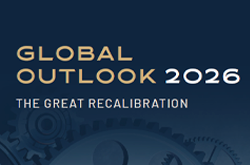Europe/USA: First hit, last to recover?
Although Europe was affected before the United States by the COVID-19 epidemic, it is nevertheless across the Atlantic that the economic recovery is strongest, supported by major stimulus plans.
Time for reopening has come in the US
The US economy is recovering well. While GDP growth climbed to 4.3% in Q4-2020, the Federal Reserve (Fed) upgraded its forecasts and is now expecting 6.5% growth in 2021, compared with 4.2% last December. The latest leading indicators releases also point to stronger economic activity for Uncle Sam. In March, the US Composite PMI was well above the 50-point threshold for the sixth consecutive month at 59.1. Although some supply shortages limited manufacturing output growth, this made the combined increase in new orders in the manufacturing and services sectors the strongest since September 2014. In addition, the number of jobless claims is on a downward trend recording a one-year low at the end of March (684,000 claims vs. 730,000 expected), reflecting the good momentum in the labour market.
This rebound in economic activity has been predominantly driven by three massive stimulus packages rolled out over the last twelve months. Following the flagship USD 1.9 trillion fiscal plan voted early March, Americans have just received their USD 1,400 COVID relief check, the third one since the beginning of the pandemic (USD 1,200 in March 2020 and USD 600 last December), bringing the total US stimulus to more than USD 4 trillion. These massive plans also come on top of an acceleration of the vaccination in the United States. The number of doses injected has reached 42 per 100 inhabitants, even though President Biden has announced that he wants to double his vaccination goal to 200 million injections by the end of April. At the same time, the number of new cases of COVID-19 per million people has reduced to a fifth of that between January and late March, although a rebound was observed in the colder northern states.
The prospect of the US economy reopening is confirmed by data on hotel reservations and restaurant visits, and is fuelling concerns about rising inflation, which has been estimated at 1.7% in February compared to 1.4% a month earlier. While a temporary rise in inflation is not ruled out by the Fed, there are some restraining forces at work. The unemployment rate is still well above its pre-pandemic level (6.2% in February vs. 3.5% previously) and wage growth has not yet materialised. Moreover, core inflation, as measured by the PCE Index1, remains at a low level of 1.4%. For the markets, the issue is therefore more one of expectations, as shown by the recent rise in the five-year breakeven inflation rates.
Crisis exit still hampered in Europe
The picture in the US contrasts with the situation in Europe. The Composite PMI figures released last week shows optimism seems to have returned. The better-than-expected level of the PMIs leads one to believe that companies are keeping their spirits up as they prepare to come out of confinement and lockdown measures expected this this summer. The Euro Area Composite PMI actually recorded an 8-month high of 52.5 (vs. 49.1 expected), driven in particular by a strong recovery in manufacturing activity (Manufacturing PMI at 62.4 vs. 57.7 expected), led by Germany. Nevertheless, it should be noted that the March PMI data in its preliminary estimates only partially incorporates the news about the new restrictive measures. Furthermore, the services sector continues to be constrained by a deteriorating health situation with the services PMI remaining below the 50-point threshold at 48.8 in March for the seventh consecutive month.
Based on vaccination data, the prospects for a more complete reopening of the economy appear to be delayed. Unlike the US, the number of cases per million inhabitants is on the rise again (350 cases compared to 230 a month earlier) and vaccinations are struggling to accelerate (10 doses injected per 100 inhabitants), while the region is also confronted with vaccine supply problems (mainly from AstraZeneca). Only the United Kingdom comes as an exception, with more than 30 million people having already received at least their first injection (i.e. 57% of the adult population), making possible for a gradual lifting of restrictions in the coming weeks.
Finally, the recovery policy also seems to be more complicated in the Euro Area. The EUR 750 billion recovery plan voted by the European Commission last July is still waiting to be released. In this context, activity should continue to contract in the first quarter according to the European Central Bank (ECB). Inflation is therefore not yet an issue in Europe, where rates have not reacted strongly to the rise of US treasury yields. The Consumer Price Index in the Euro Area is still well below the ECB's targets at 0.9% in February.
Markets remain forward-looking
In this context and despite the uncertainties related to the continuing pandemic in Europe, the markets as usual are looking ahead. Although the fuller recovery of the European economy seems to be postponed to the second half of the year, prospects for a reopening of the economy are fuelling investor optimism. Furthermore, a pick-up in activity in the US which should boost global demand, is also adding weight to this sentiment. Thus, European indices, buoyed by their more cyclical and value components and with lower valuation levels than across the Atlantic, are regaining their appeal, as it is the case with the Stoxx 600, which is now back to its pre-epidemic level.
[1] Personal Consumption Expenditures Index.
March 31, 2021




